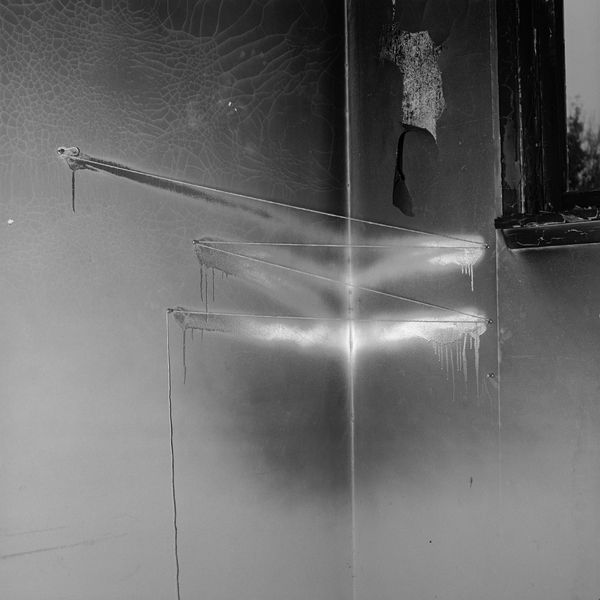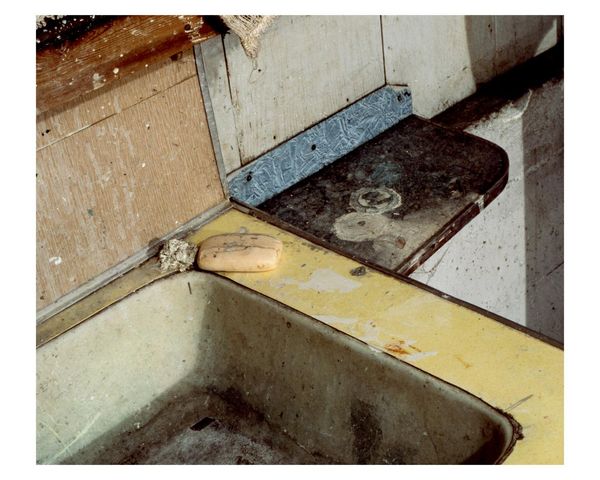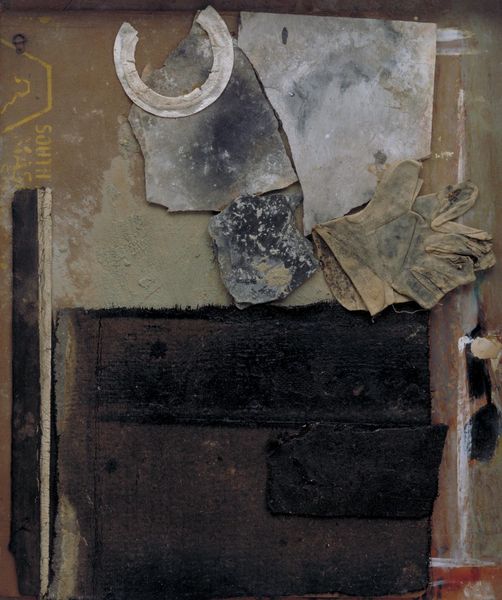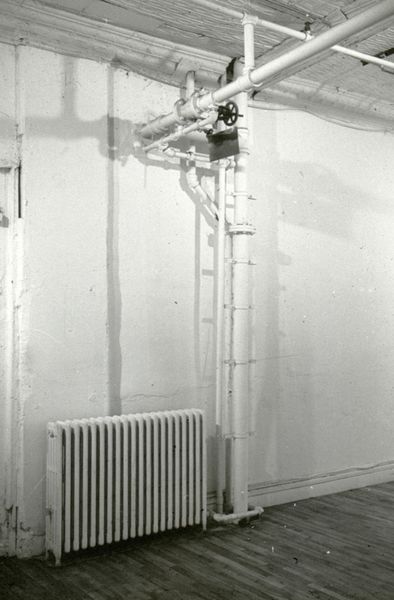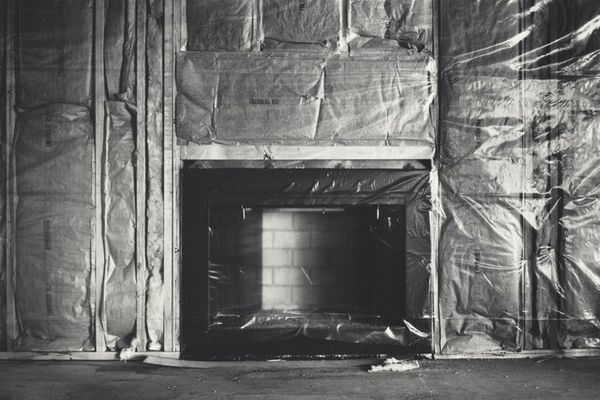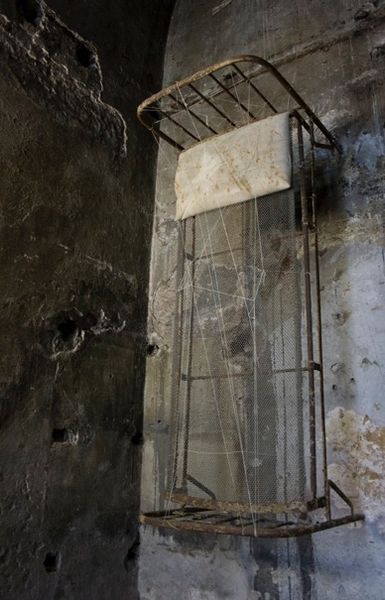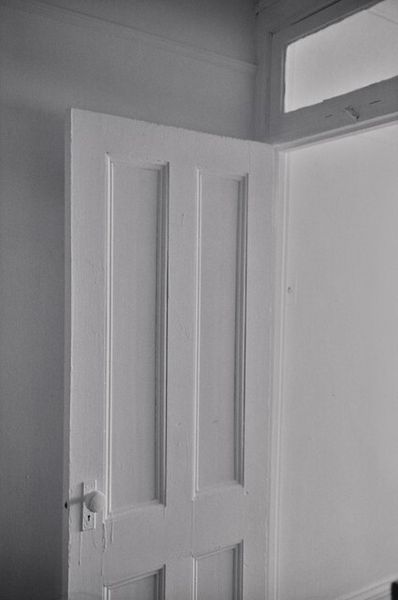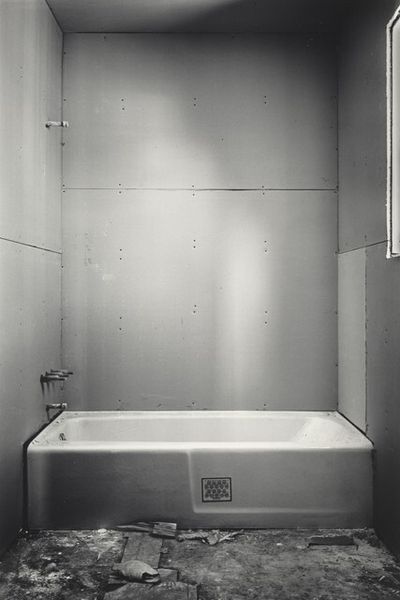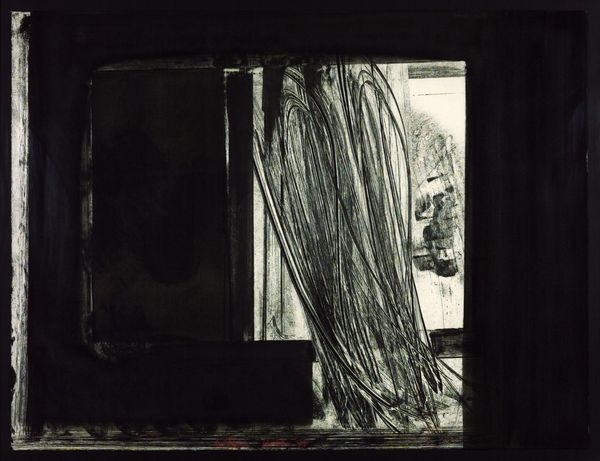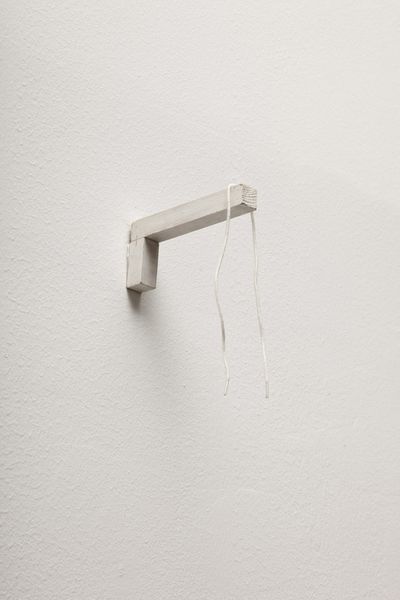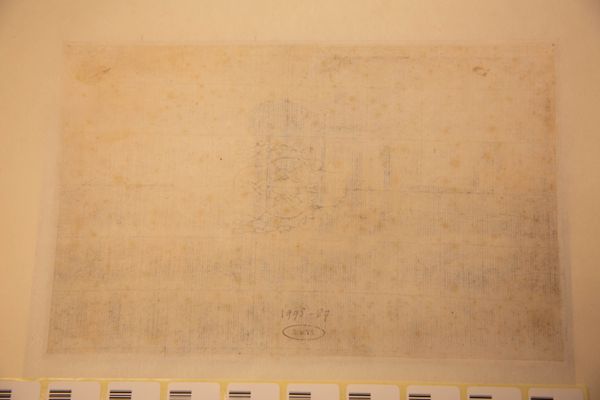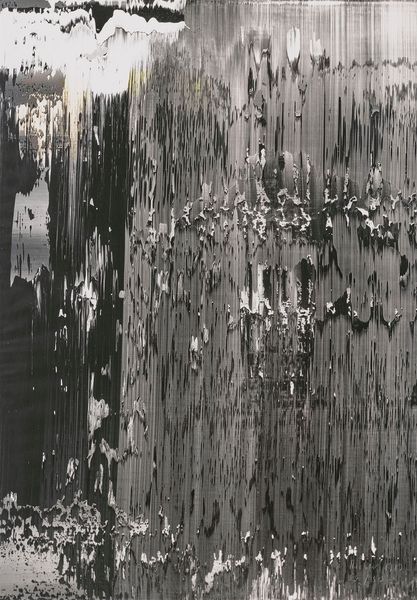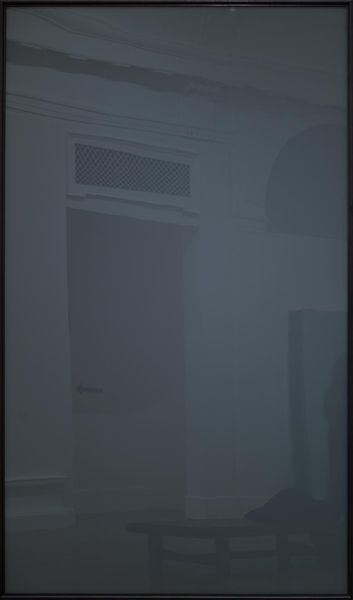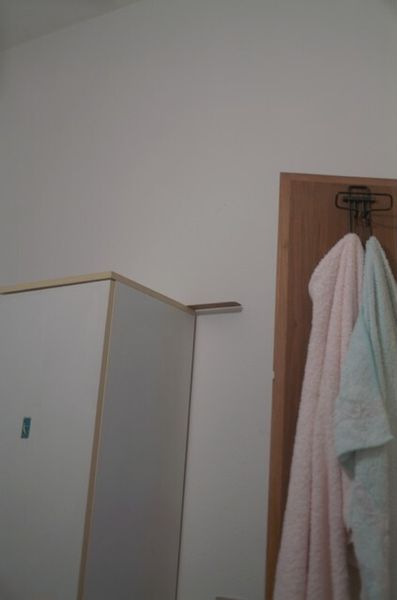
Dimensions: object: 2440 x 1830 x 380 mm
Copyright: © John Latham Estate, courtesy Lisson Gallery, London | CC-BY-NC-ND 4.0 DEED, Photo: Tate
Editor: Here we have John Latham’s "Observer IV," a mixed media piece. I'm struck by the stark contrast between the pristine white background and the chaotic mass of charred materials. What is your interpretation of this contrast? Curator: The interplay between the found objects and the painted surface presents a fascinating dichotomy. Note the linear progression established by the cord, a visual pathway leading from the upper element to the dense accumulation below. How does this deliberate arrangement impact your reading of the piece? Editor: It feels like a conduit, connecting two disparate states, like knowledge being transferred or lost. Curator: Precisely. The materials themselves—the charred wood, the book—speak to a process of destruction and perhaps, a transformation. Consider how Latham employs texture and spatial arrangement to create meaning. Editor: So, the tension between order and chaos, and the materials themselves, are key to understanding Latham’s intent. Thank you. Curator: Indeed. Visual analysis reveals a complex meditation on form and substance.
Comments
Join the conversation
Join millions of artists and users on Artera today and experience the ultimate creative platform.
tate 6 months ago
⋮
Following 'The Burial of Count Orgaz' 1958 (also in this room), in 1959-60 Latham made four book reliefs. These comprise the 'Observer' series of which this is the final work. Like the other three reliefs, 'Observer IV' has a triangular composition. The three points forming this structure represent three kinds of 'observing persons' which Latham connects with the three brothers in Dostoevsky's novel 'The Brothers Karamazov'. He interprets the brothers as representing three states of existence and self-awareness. The three points in the work thus correspond with the brothers and, in turn, with the states that the brothers represent. The mass of material on the right relates to Mitya who signifies spontaneous experience and instinct. Mitya is connected by a tube to Ivan at the top of the canvas who signifies an intellectual state capable of observing the Mitya state. The small, wedge shape at bottom left is linked with Aloysha - independent of Mitya and Ivan and signifying a higher reflective level capable of observing the other two. Dostoevsky's novel informed Latham's view of the artist as an 'incidental person' who, like Aloysha, is an independent observer, reflecting and reaching insights through intuition. Latham has commented that the 'Observer' series 'isn't intended as allegory but as geometry (evenometry) of the three basic kinds of person.' Gallery label, August 2004
